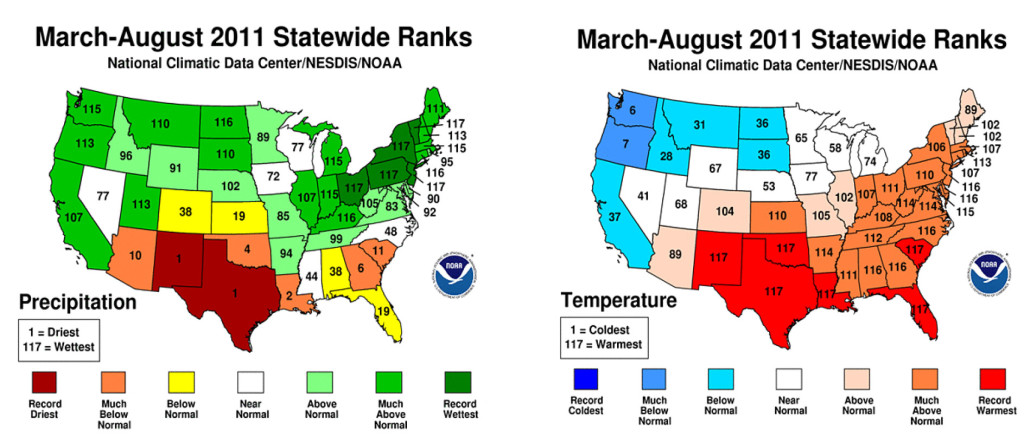Many politicians in the nation’s capital are still in denial that human activity is contributing significantly to global climate change. Meanwhile, climate will continue to change regardless of the current state of the debate, and New Englanders are finding ways of adapting to later autumns, earlier springs, and milder winters.
Dr. Alan Betts, one of New England’s leading climatologists, describes how mean winter temperatures have been increasing by an average of 0.5 degrees Celsius, or 1 degree Fahrenheit, every decade for the last forty years in New England. He states that in the past few decades, the length of time that small lakes in Vermont and New Hampshire remain frozen over the winter is decreasing by seven days per decade, and in three of the past six years the ground hasn’t frozen until January, an event which on average used to occur by November.
The Intergovernmental Panel on Climate Change (IPCC) has asserted that the root cause of the warming is an enhanced “Greenhouse Effect” due to a worldwide increase in carbon dioxide particles in the air. However, during the winter in New England, there are also two feedbacks that exacerbate the local warming effect.
The first feedback is called the “snow-ice albedo feedback”. This is a cycle whereby warmer temperatures melt more snow and ice, causing more bare ground to be exposed to solar radiation. Snow and ice is said to have a lower “albedo” than ground, which means that it is better able to reflect sunlight rather than absorb its radiation. With more bare ground exposed, there is more warming at the surface, which causes warmer temperatures, which causes more melting, etc.
The second feedback is related to atmospheric moisture. Bare, wet ground is capable of higher evaporation rates into the atmosphere than snow/ice-covered ground, and warmer air is capable of containing higher amounts of water vapor. These conditions in turn lead to more clouds and more precipitation over snowless areas in the winter. Having more clouds means that the near-surface atmosphere is essentially able to “trap” more longwave radiation being emitted upward from the Earth’s surface rather than distributing it to upper layers of the atmosphere or out to space, thereby contributing to warming at the surface. More precipitation will also keep the ground moister, which will allow for continued evaporation and even higher amounts of atmospheric water vapor.
Dr. Betts asserts that while local New Englanders may not like these changes, they are resiliently finding ways to adapt. One of the biggest areas that has required adaptation is the care of crops, fields, and plants. Growing seasons have lengthened in time, and crops are being planted earlier and converted later. Edible crops are increasingly able to survive winters too, leading to an expansion in “the availability of green crops in the winter farmers’ markets in Vermont,” says Betts.
This enhanced growing season comes at great cost, though. Warmer temperatures and increased atmospheric water vapor have greatly increased the frequency of heavy precipitation and flood events. Vermont, New York, and several other states experienced their wettest years on record in 2011 (see figure below), and at one point had to endure record flood levels of Lake Champlain and surrounding rivers/lakes for two straight months in April and May.

State maps of 2011 precipitation and temperature rank from 117 years of weather records. Image reproduced from NOAA/NCDC.
While 2011 was quite an extreme year for New England, there is overwhelming evidence that this is the general direction in which the area’s climate trend will continue to head with unchecked worldwide fuel emissions. It is heartening to see that local communities are able to adapt to such changes, but it must be asked how far we are willing to push the natural limits of our intricate atmosphere before it is incontrovertibly damaged. This is a question that we will unfortunately discover the answer to should political ignorance and ongoing refusal to address the critical worldwide issue of climate change continue.
References
Betts, A.K. Climate Change: Taking a Local Perspective to the Global Level. Earthzine, Feb. 27, 2012. Web. Feb. 28, 2012.
Betts, A.K. 2011. Vermont Climate Change Indicators. Weather, Climate and Society, 3, 106-115, doi: 10.1175/2011WCAS1096.1
Betts, A. K. 2011. Seasonal Climate Transitions in New England. Weather, 66, 245-248. doi: 10.1002/wea.754
IPCC. 2007. Climate Change 2007: The Physical Science Basis. Contribution of Working Group I to the Fourth Assessment Report of the Intergovernmental Panel on Climate Change. 996 pp. (S. Solomon et al.) United Kingdom and New York, NY, USA: Cambridge University Press.
NOAA NCDC, National temperature and precipitation maps, March-August 2011.

Comments are closed.